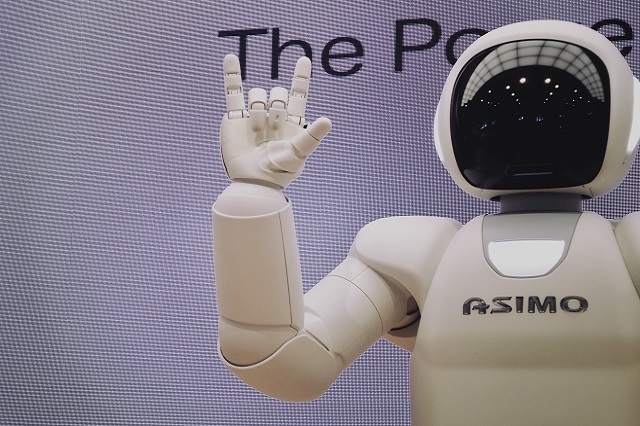Robots Vs Humanoid
Robots vs Humanoids: The Battle of the Future!
Imagine a world where advanced machines roam freely, seamlessly interacting with humans on a daily basis. A world where robots and humanoids coexist, each vying for dominance in their own unique way. Well, my friends, that future is not as far away as you might think.
In recent years, we have witnessed an unprecedented rise in robotics technology. From autonomous cars to smart homes, these marvels of engineering have become an integral part of our lives. But now, a new chapter is set to unfold – a battle between Robots and Humanoids!
Advancements in technology have propelled us into this era of innovation and automation. But what exactly differentiates robots from humanoids? What are the pros and cons of each? And perhaps most importantly, how will this clash impact the job market?
Join me as we delve into this fascinating topic and explore the intriguing possibilities that lie ahead. Brace yourselves for a gripping journey through the realm of Robots vs Humanoids!
The Rise of Robots and Humanoids

In the not-so-distant past, robots were relegated to factory floors and science fiction novels. They were machines designed for specific tasks, lacking human-like qualities or mobility. However, with rapid advancements in technology, we now find ourselves on the cusp of a robotic revolution.
Robots have evolved from their industrial origins to become sophisticated beings capable of performing complex tasks autonomously. From surgical procedures to customer service interactions, they have infiltrated various industries, streamlining processes and enhancing efficiency.
But it doesn’t stop there. Enter the humanoid – a robot designed to resemble humans in appearance and behavior. These lifelike creations blur the lines between man and machine, captivating our imagination with their uncanny resemblance to us.
Humanoids possess remarkable capabilities that extend beyond mere functionality. With advanced artificial intelligence algorithms and sensory systems, they can recognize faces, interpret emotions, engage in conversations – all while exhibiting human-like movements.
The rise of both robots and humanoids has been fueled by breakthroughs in robotics engineering, AI development, and sensor technology. These innovations have enabled machines to adapt dynamically to changing environments without constant input from humans.
As these technologies continue to advance at lightning speed, one cannot help but ponder the implications they may hold for society as a whole – both positive and negative alike.
Stay tuned as we delve deeper into this clash of titans: Robots vs Humanoids!
Advancements in Technology Leading to this Battle
Technology has been rapidly advancing over the years, bringing us closer and closer to a world where robots and humanoids exist alongside humans. It is through these advancements that we find ourselves on the brink of a battle between these two types of beings.
One key factor leading to this battle is the development of Artificial Intelligence (AI). AI has allowed robots and humanoids to become more intelligent and autonomous, enabling them to perform complex tasks with ease. They can analyze data, make decisions, and even learn from their experiences. This level of intelligence has made them valuable assets in various industries such as manufacturing, healthcare, and even customer service.
Another significant advancement is in robotics technology itself. Robots are now equipped with advanced sensors that allow them to perceive their environment accurately. They have sophisticated algorithms that enable them to navigate obstacles and perform intricate movements with precision. These capabilities have made robots incredibly efficient at repetitive tasks like assembly line work or packaging goods.
On the other hand, humanoids are designed not only for functionality but also for resemblance to humans themselves. With advancements in materials science and robotics engineering, humanoids have become more lifelike than ever before. Their realistic features allow them to interact seamlessly with humans in social settings or assist those who need help around the house.
The battle between robots and humanoids stems from our desire for efficiency versus our need for connection. While robots may be faster at completing tasks due to their precise programming, they lack emotional intelligence which makes it harder for them to connect on a deeper level with humans.
Humanoids bridge this gap by combining efficiency with empathy – they can understand emotions or respond appropriately during conversations. However noble this might seem though there are ethical concerns about creating machines so closely resembling humanity.
With all these technological advancements paving the way towards an inevitable clash between robots and humanoids; one thing remains clear – both will continue evolving alongside each other as we strive towards a more efficient and connected future.
Pros and Cons of Robots and Humanoids

Robots and humanoids, the two sides of the technological revolution coin. They each come with their own set of advantages and disadvantages that have sparked debates among experts and enthusiasts alike. Let’s delve into some pros and cons of these remarkable machines.
Robots offer unparalleled efficiency in completing repetitive tasks with precision and accuracy. They don’t tire or get bored, making them ideal for monotonous jobs like assembly line work or data entry. Additionally, robots can handle hazardous materials or operate in dangerous environments where humans may be at risk.
On the other hand, humanoids bring a touch of humanity to technology. With their ability to mimic human movements and expressions, they can provide companionship to those who need it most – the elderly or individuals living alone. Humanoids also possess cognitive abilities that allow them to adapt to various situations more effectively than traditional robots.
However, one major drawback of robots is the potential loss of jobs for human workers. As automation becomes more prevalent across industries, many fear that robot technology will replace millions of jobs worldwide. This displacement could result in economic instability and increased unemployment rates if not properly addressed.
Similarly, there are concerns surrounding humanoids as well. The advancement of humanoid technology has raised ethical questions about creating machines that resemble humans too closely. Some argue that this blurs the line between man-made creations and sentient beings while others worry about privacy invasion due to humanoid surveillance capabilities.
In conclusion (oops!), both robots and humanoids bring significant benefits but also raise legitimate concerns within society today.
Impact on the Job Market
The emergence of robots and humanoids in various industries is undoubtedly transforming the job market. As these advanced technologies continue to evolve, they bring both opportunities and challenges for workers across different sectors.
One major concern is the potential displacement of jobs traditionally performed by humans. With robots becoming more efficient and capable of performing complex tasks, there is a valid fear that many individuals may find themselves unemployed or struggling to compete with machines.
However, it’s important to note that while some jobs may be taken over by automation, new roles will also be created as a result of this technological revolution. The development and maintenance of robots and humanoids require skilled professionals who can design, program, and repair these sophisticated machines.
Moreover, the introduction of robotic assistance in certain industries can enhance productivity levels and allow employees to focus on higher-value tasks. For example, in manufacturing plants where repetitive assembly line work was once done manually by humans, robots can now take over those monotonous duties while workers are reassigned to more creative or analytical positions.
Additionally, some argue that increased automation may lead to economic growth which could potentially generate new employment opportunities in other areas. As technology advances and businesses adapt their operations accordingly, there will likely be an increased demand for workers with expertise in fields such as artificial intelligence (AI), robotics engineering, data analysis, cybersecurity, and digital marketing.
Nonetheless,
it cannot be denied that the transition towards a more automated workforce poses significant challenges for certain segments of society. Low-skilled workers who rely on manual labor might face difficulties finding suitable replacements for their current occupations.
To mitigate potential negative impacts on employment, it becomes crucial for governments,
educational institutions, and companies to collaborate in providing training programs
and re-skilling initiatives.
By equipping individuals with new skills aligned with emerging technologies,
we can ensure a smoother transition into an increasingly automated world.
In conclusion,
the rise of robots versus humanoids is an ongoing battle that will continue to shape the future of industries and the
Share this post:

